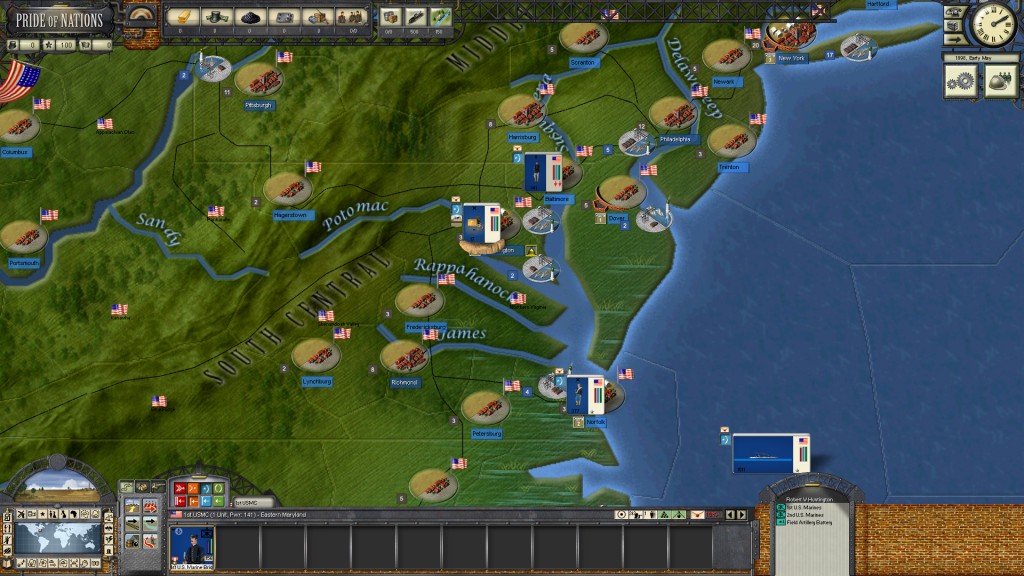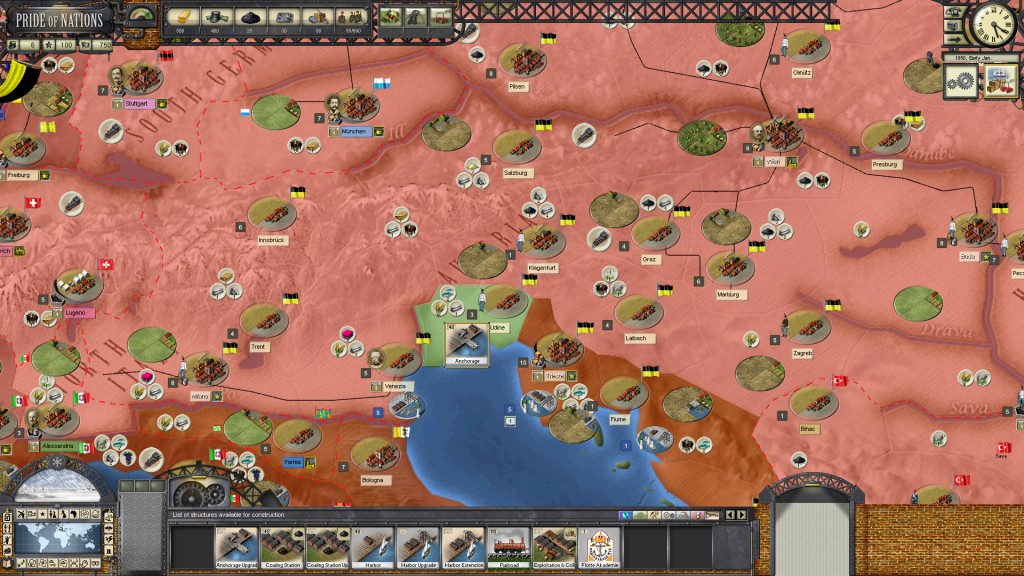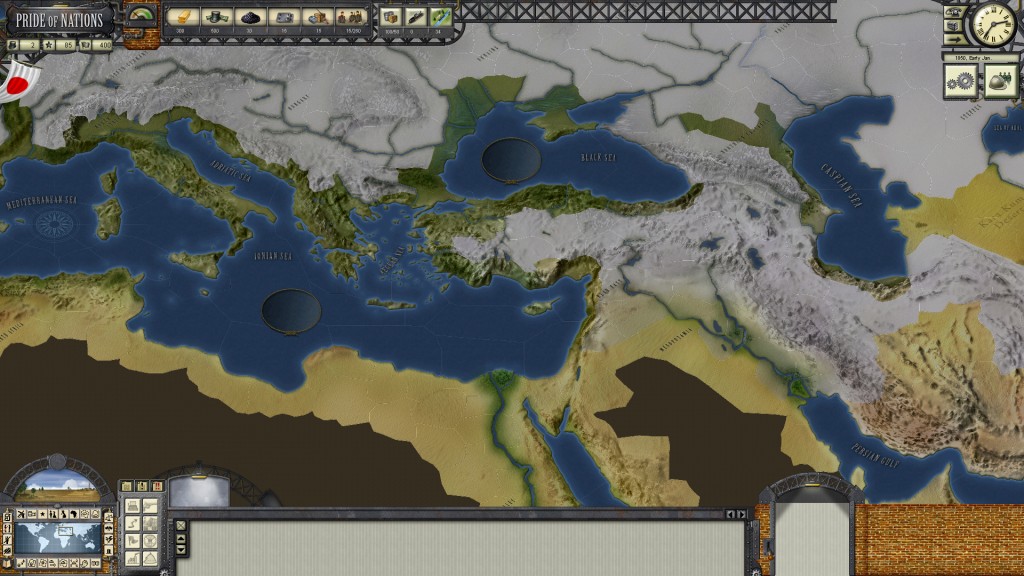

Military Map Mode showing the unit cards that represents armies. These cards stack upon each other.
When creating buildings or units, applying decisions, and moving troops around the map the game uses a drag and drop system. By picking up a building card, for example a railway, you can drag that card onto a region to begin construction. When you pick up a unit or building or construction, the map becomes colour coded so you can see where it is possible to put said building/unit. Green means it is possible, Red means it is not. This is helpful as it isn’t immediately apparent if you have a building of the same type in the area.

Colour coded map with building card being dropped onto a province.
Pride of Nations suffers from the same disease that many grand strategy games suffer: that of a steep learning curve. While the all text tutorial goes a long way to help, when entering your first campaign it is easy to get struck by the depth of it all. It is a good idea to try one of the smaller scenarios first, before jumping into a grand campaign. The scenarios offer plain historical objectives to be achieved, and have a definitive win/loss/draw. They are great for getting into the roll of the game. When trying a grand campaign, remember it lasts for a very long time, so don’t expect to cripple your enemies with a few quick moves. If you are looking for a casual game, this may not be right for you.
The map that you play on looks great from a distance (see screenshot) but when zoomed in is not so pretty. While this is a minor issue if you really are into the game, it doesn’t do much for encouraging new players dig in and learn. This combined with the steep learning curve may well be enough to repel the more casual strategy enthusiast. The games runs on the AGE Engine, which does a noble job, though at some times it can be found to struggle and slow down quite noticeably when moving the camera long distances, for example from a colony back up to the British Isles. Load times are short, and everything fits quite well.

The map from a distance imitates 3D well.
Pride of Nations is a solid historic grand strategy game that offers a long and involved grand campaign. It comes loaded with varied shorter historical scenarios, great for learning the game and getting a taste of different pieces of history. While marred by a very steep learning curve and some technical and graphical issues, it does what it has set out to do. Historical strategy enthusiasts interested in the period may well find something they like here, this game is made for them. Little features like historically accurate unit portraits show that Pride of Nations was made for history enthusiasts by history enthusiasts. Just be sure you are up to the challenge.
Recommended Comments
There are no comments to display.
Please sign in to comment
You will be able to leave a comment after signing in
Sign In Now